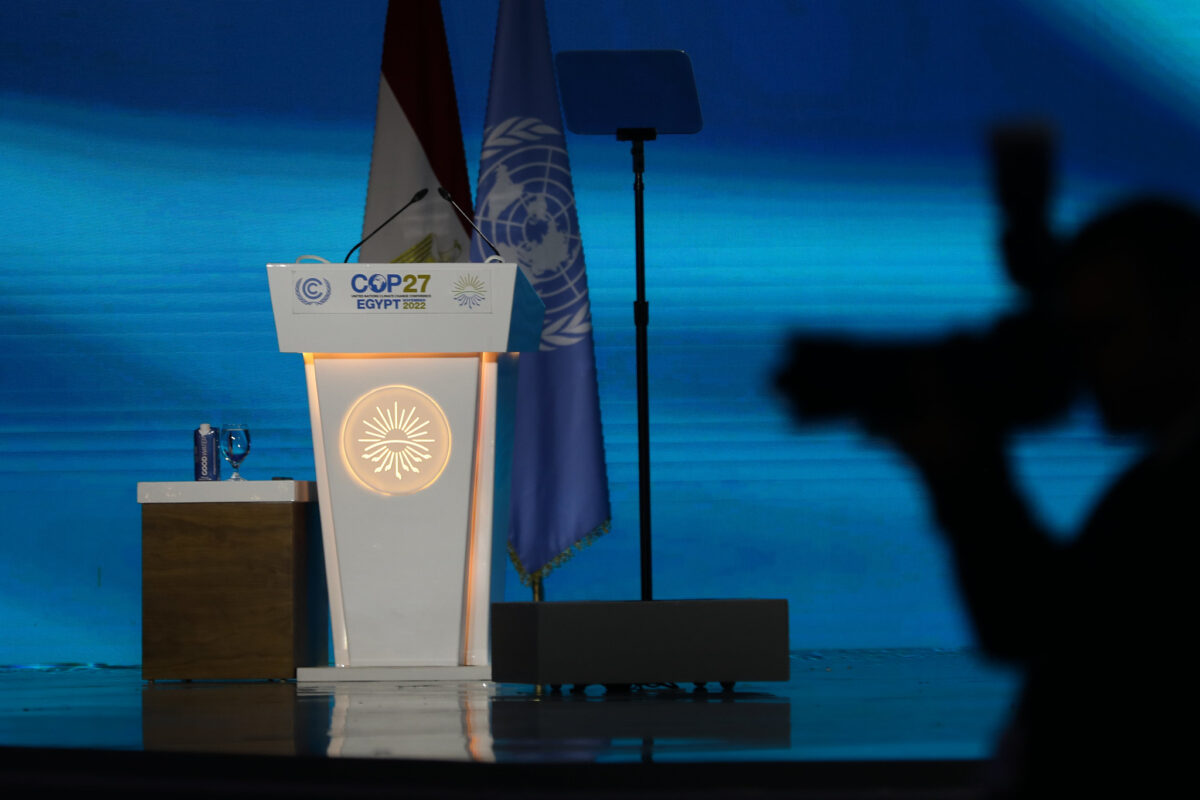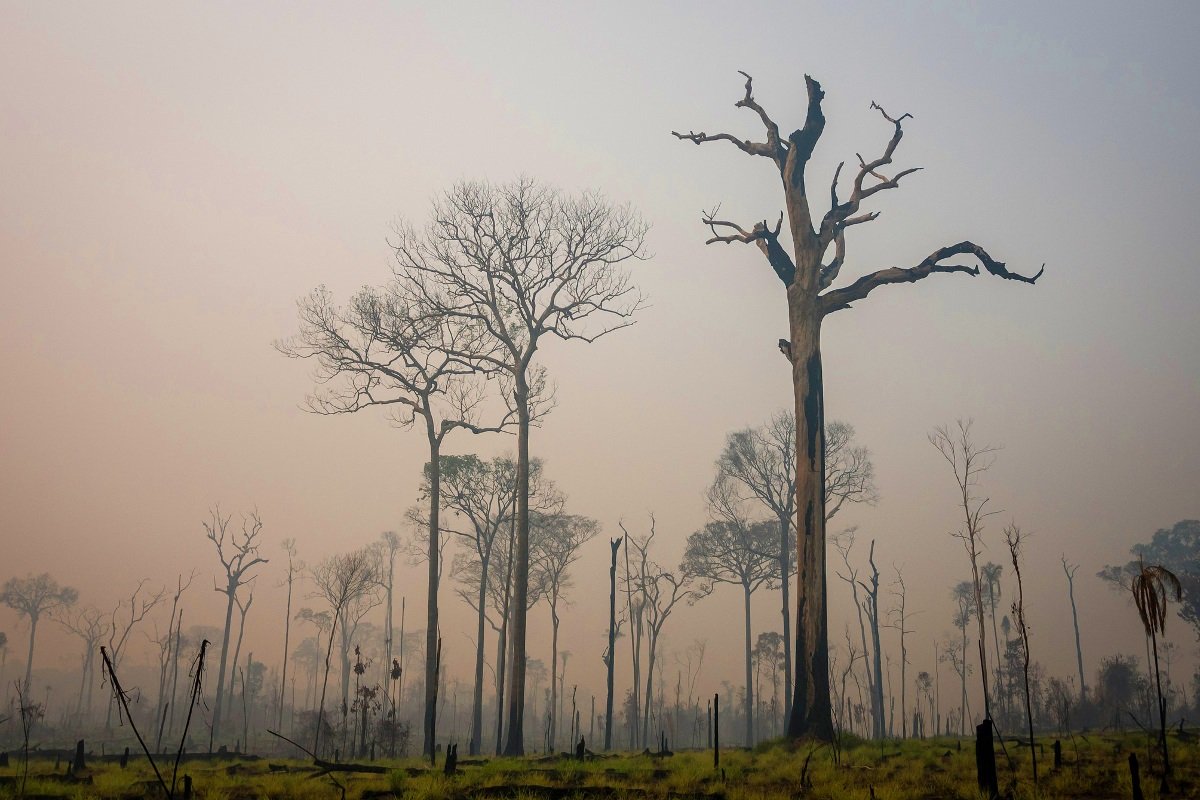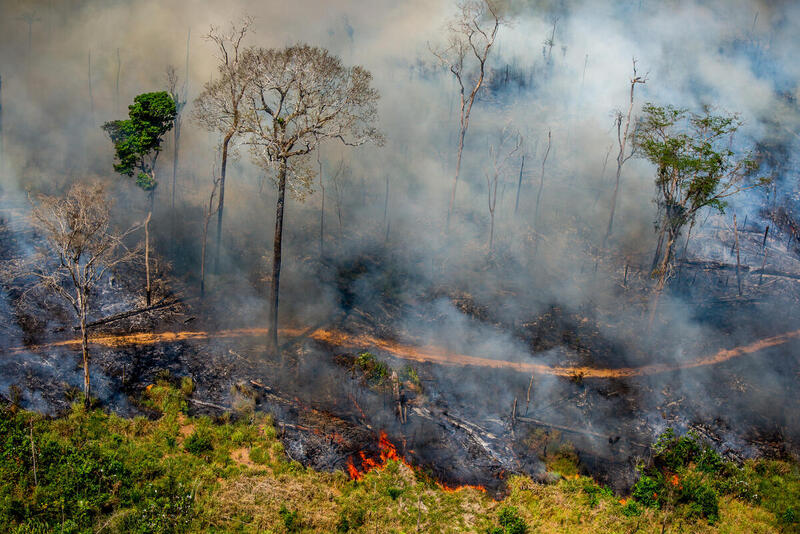Specialists focus on the difficulties the new 2023 administration faces to reach the goal promised by the Bolsonaro administration at COP26 last year. Escalating deforestation rates could keep Brazil from carrying out its promise.
At the UN Climate Change Conference in Glasgow a year ago (COP 26), Brazil’s Minister of the Environment Joaquim Leite surprised everyone when he announced that Brazil would eliminate illegal deforestation: Deforested areas that did not have authorization for removal of the vegetation registered in IBAMA’s control system in Amazonia by 2028, as well as reduce emissions by 50% by 2030 (read more about this below), ignoring the 73% increase in devastation during the first three years of Jair Bolsonaro’s administration (Liberal Party), according to consolidated data from INPE, the National Institute for Space Research.
However, what happened in the first ten months of 2022—when actions to reduce deforestation should have come into play—were even higher numbers than those from the same period during the three previous years, meaning yet another record year for devastation.
According to scientific director of IPAM: Amazon Environmental Research Institute Ane Alencar, Brazil signed an “empty” commitment: “the administration was trying to better its image with false promises and it signed accords which it by no means had any conditions to fulfill. And we have already gotten off to a terrible start in 2022 if we are going to achieve zero deforestation, placing us even farther from reaching this goal that was signed ‘blindly.”
The administration was trying to better its image with false promises and it signed accords which it by no means had any conditions to fulfill.
Ane Alencar, scientific director of IPAM
Now that October’s presidential elections have passed and will result in a change of administration next year, Amazonia is again under debate, given the expectations for readoption of policies that, from 2002-2011, reduced deforestation by 70% in the region and guaranteed relatively stable numbers until 2017.
But taking the destruction back to levels of 13 years ago poses new challenges for President-elect Luiz Inácio Lula da Silva (PT), who will have to take on a different Amazonia than the one he dealt with in 2003. One of the main changes in the region, says Alencar, is the consolidation of organized environmental crime inside the forest.
“Amazonia today has been overtaken by crime. Organized crime rules the regions where deforestation reigns. We will practically have to go to war to reduce deforestation,” evaluates Alencar.
Increased land-grabbing inside public forested land and increased wildcat mining in protected areas like Indigenous Territories are examples of the sort of illegal practices that Lula will have to take on to help the administration that follows his to guarantee Bolsonaro’s promise by 2028.

In parallel, the new government will also have to rebuild its watchdog agencies like IBAMA: Brazilian Institute of Environment and Renewable Natural Resources and ICMBio: Chico Mendes Institute for Biodiversity Conservation, which were both largely dismantled in recent years. According to scientist and observer of climate issues Natalie Unterstell, it is essential that Brazil entirely restructures its environmental governance.
“The nation needs a new plan for the prevention and control of deforestation on the federal level, and it has to be different from what we knew worked in the past. Some actions must be reviewed because today’s reality is much more complicated, including an Amazonia that has been taken over by militias and violence."
The nation needs a new plan for the prevention and control of deforestation on the federal level, and it has to be different from what we knew worked in the past.
Natalie Unterstell, scientist and observer of climate issues at Instituto Talanoa
'An unrealistic goal'
In Ane Alencar’s opinion, eliminating illegal deforestation in Brazil’s Amazonia six years from now is an “unrealistic” goal. According to her, given the current rates of devastation, Brazil would have to reduce clearcutting rates by over 2,000 square kilometers per year to achieve zero deforestation by 2028.
“This would already have been difficult back when we managed to make big reductions during the Lula administrations. Today, even more so because the scenario in Amazonia is different. Still, if the fight against illegal deforestation is well carried out, we have good chances of cutting numbers down by at least half by 2028.”
She believes that the solution will be to invest heavily in intelligent and articulated command and control policies to discourage the illegal occupation of public land and destabilize organized crime in the region. This would reduce deforestation by half.
“The other part of the equation has to do with improving the management of environmental licensing, so we can know if the deforestation happening on private land is legal or not and so we can actually implement the Forestry Code. The fourth point is to encourage good practices so that producers cut down fewer trees and make better use of the land they have already cleared. In order to do this, we need to have a strong government, an engaged private sector and an organized civil society that demands results.”
Natalie Unterstell affirms that the first step in reducing deforestation in Amazonia has been taken: defeating Bolsonaro at the polls. “This represents significant change. It is encouraging,” she says. Unterstell reiterates that meeting the 2028 goal will require much work on the part of this administration and the one that follows it in 2027.
“Time is short for us to get from high levels of deforestation to eliminating it. We will have to make reductions already in the first year to change people’s expectations, so those who make money cutting down forest today stop being able to do so.”
The decisions that were made
The goal set by over 100 countries at COP 26 in 2021 was to eliminate deforestation by 2030. Brazil, however, anticipated its commitment by two years. The government’s idea was to reduce deforestation by 15% by 2024 and slash numbers by half by 2027, eliminating illegal devastation in the following year.
Another proposal presented by Brazil was to cut emissions of greenhouse gases responsible for global warming by 50% by the year 2030 as well as neutralize all releases by 2050. Considered by the current Minister of the Environment to be “ambitious”, the goal was criticized for defining only percentages and not stating any real numbers for cuts. A lack of commitments for this decade was also questioned.
InfoAmazonia report for the PlenaMata project .





